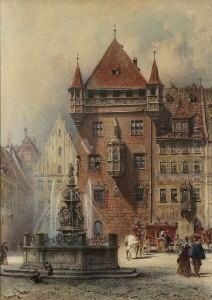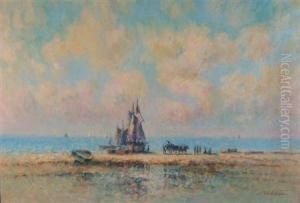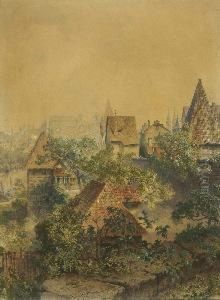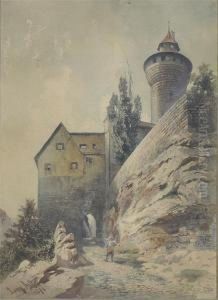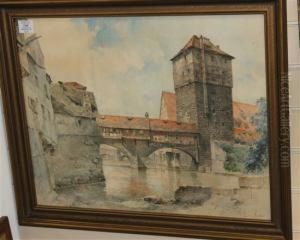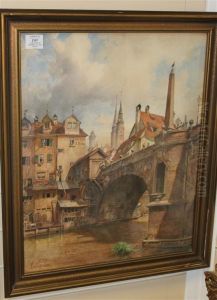Lorenz Ritter Paintings
Lorenz Ritter was a German artist, born in Nuremberg in 1832, into a family with a rich artistic pedigree. His father, Christian Friedrich Carl Ritter, was an engraver, which undoubtedly influenced Lorenz's early exposure to and interest in the arts. The Ritter family's environment was imbued with creativity, fostering Lorenz's artistic talents from a young age. He pursued his art education at the Academy of Fine Arts Nuremberg, a venerable institution that has nurtured many notable artists. Ritter's academic journey was pivotal in honing his skills and defining his artistic direction.
In the mid-19th century, Lorenz Ritter embarked on a career that would see him become one of the prominent figures in the German Romantic movement. His work predominantly featured architectural and cityscape etchings, capturing the essence of German and European medieval and renaissance buildings with remarkable detail and accuracy. Ritter's etchings stood out for their intricate details and the ability to convey the atmospheric beauty of urban landscapes. This was a time when the romantic glorification of the past was manifesting in art as a counter-movement to the rapid industrialization and modernization of Europe. Ritter's etchings served as a visual preservation of historic architecture, reflecting a nostalgia and reverence for the past that was synonymous with the Romantic movement.
Beyond his etchings, Lorenz Ritter was also known for his contributions to the graphic arts, including book illustrations and designs. His work in this area further cemented his reputation as a skilled engraver and artist. Ritter's artistic output was not limited to his professional achievements; he was also involved in academic and teaching roles, contributing to the next generation's education and appreciation of the arts.
Lorenz Ritter's legacy is framed by his contribution to the Romantic movement and his dedication to capturing the architectural beauty of the past. His death in 1921 marked the end of a prolific career that left a lasting impression on the German art scene. Today, Ritter's etchings and artworks are celebrated for their historical value and artistic excellence, housed in museums and collections across Germany and beyond. Through his work, Lorenz Ritter offered a window into the architectural marvels of bygone eras, preserved for future generations to appreciate.
